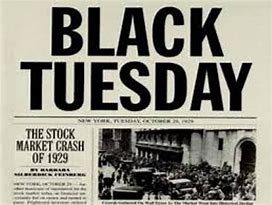Statues are a mark of honour. Like Edward Colston, Cecil Rhodes and Oliver Cromwell have to go






Statues are a mark of honour. Like Edward Colston, Cecil Rhodes and Oliver Cromwell have to go
There’s a good reason why there will probably never be a public statue of Margaret Thatcher in London – and it's also why the figure of Bristol's slave trader should be fished out of the water and found more suitable homeThere’s a good reason why there will probably never be a public statue of Margaret Thatcher in London – and it's also why the figure of Bristol's slave trader should be fished out of the water and found more suitable home
The Independent employs over 100 journalists around the world to bring you news you can trust. Please consider a contribution or subscription.The Independent employs over 100 journalists around the world to bring you news you can trust. Please consider a contribution or subscription.Given everything, I’m quite surprised the statue of Edward Colston in Bristol survived for as long as it did.
His reputation, after all, was trashed long before his memorial.He acquired his vast fortune, later used philanthropically, from the slave trade. He was thus responsible for the death of thousands of the African slaves – that is, his fellow human beings – that he profitably shipped across the Atlantic.
If a ship transport was too heavy or running out of food, women and children were thrown over the side. Now the iconoclasts of Bristol have tossed Colston into the drink.
Of course, the moral compass of Colston’s time is unrecognisable today, but contemporaries such as William Wilberforce recognised evil when they saw it: nobody forced Colston to make money from misery.There is no reason for Colston to cause ongoing misery in 2020. When people feel so wounded by a statue that they are moved to assault it, then there is little point in keeping it in situ, even though others feel it serves our collective memory.
More who passed it, I suspect, had no idea who he was. They may have learned more about his legacy through the dispatching of his image than they did the entire time it stood.If Black Lives Matter, why am I losing white friends over it?It was the same with the American statue of General Robert E Lee, in its prominent spot in Charlottesville, Virginia. It was due to be relocated because of strength of feeling about his role in the American Civil War.
There are lots of statues like that strewn across the Deep South, erected long after the Confederacy lost – and, in fact, much more a part of the later, long and gradual dismantling of the civil rights that people of colour had won.
The Lee statue is not some contemporary civil war artefact, but a symbol of much later oppression, designed as a forceful warning, as frightening and contemptible, in its own way, as a KKK torchlight procession.
People of colour found that, and various other romanticisations of the era of white supremacy and segregation, profoundly offensive and painful. Their feelings matter.The demonstrations and counter-demonstrations about Lee’s removal in 2017 led to one death and 19 people being injured, and Donald Trump’s ill-judged remarks about “very fine people on both sides”.
The point about statuary is that it is generally a consensual mark of honour, not a wind up, insult or a focus for violence. That is why there’ll probably never be a public statue of Margaret Thatcher in London, and why Westminster Council recently rejected the idea. “Divisive” was the euphemism most used about the former prime minister when she died in 2013. She was no doubt cremated in part so that no one would ever be able to quite literally dance on her grave.
It is also why the ridiculous statue of Saddam Hussein in Firdos Square, Baghdad, was famously pulled down, decapitated and given the full shoe treatment by free Iraqis in 2003. It is why the IRA eventually got round to blowing up Nelson’s Pillar in Dublin, a replica of the column in London’s Trafalgar Square, in 1966. People feel understandably angry about statues of people they hate, and its best to bear that in mind when commissioning or preserving public art.
Hard right politicians are rehashing the ideas of 1930s fascistsNevertheless, I would be in favour of fishing Colston out of his watery grave and rehoming him, his recent coat of blood-red paint included, as one of the exhibits in a new British park devoted to significant yet questionable figures of our morally problematic past. In the former Soviet states, something similar has been achieved to great success. It allows the memory of collective history, without the daily reminder of the pain and suffering for ordinary citizens. Budapest’s Memento Park is perhaps the best example.
If we were to create such a site, a worthy addition would be the figure of Oliver Cromwell, the butcher of Ireland and dictator of England whose statue currently sits outside parliament. It would also be a natural home for Cecil Rhodes, the ruthless imperialist presently perched (perhaps now more precariously) on the front of Oriel College, Oxford – again not an original adornment, but plonked there for a large cheque in 1909. Of course, this new generation of students finds him gut-wrenching to cycle past, so the colossus of Africa, the man who dreamed of British dominion from the Cape to Cairo, should now be retired also.
Reference: The Independent: Sean O'Grady June 07 2020
Articles-Popular
- Main
- Contact Us
- Planetary Existences-2
- Planetary Existences
- TWO REVELATIONS-2
- Jeffery Epstein - The Saga - 9
- Jeffery Epstein - The Saga - 8
- Jeffery Epstein - The Saga - 10
- The Two Revelations
- The Fourth Way - Study of Oneself - P.D.Ouspensky
- Impeachment Investigators Subpoena White House - Ukraine
- Universality of Initiation
- The Path Of Initiation
- The Participants In The Mysteries-2
- Initiation and the Devas
- The Fourth Way - Wrong Functions - P.D Ouspensky
- The Final Initiation
- Statues are a mark of honour. Like Edward Colston, Cecil Rhodes and Oliver Cromwell have to go
- Discipleship - Group Relations - 2
- The Probationary Path - 2
- The Participants In The Mysteries
- Discipleship - Group Relationships
- Discipleship
- The Succeeding Two Initiations
- Jeffery Epstein - The Saga - 7
- Jeffery Epstein - The Saga - 6
Articles - Latest
- They Lied to Us! The Truth They Hid About Hitler’s Death — Gerard Williams
- Ramaposa Dragged Out of Parliament
- Madagascar Goverment Collapse
- The Reality of Digital Id
- Welcome To The End Of Western Dominance
- Why is the Sahel turning its back on France?
- Sarkozy gets 5 years in prison in Gadhafi case
- The EU in 2025: A union at the crossroads of chaos
- Deep distrust of EU leaves Italy's Meloni in a corner over bailout fund
- Regime crisis in France: Bayrou falls, now Macron must go!
- Idi Amin president of Uganda
- Anger at Starmer's 'surrender deal' that hands Spain control over Gibraltar border
- Iran doubles down as US signals Israel could strike during nuclear talks
- What could have caused Air India plane to crash in 30 seconds?
- WW3 fears explode as Britain now Russia's 'enemy number 1' - even ahead of Ukraine





